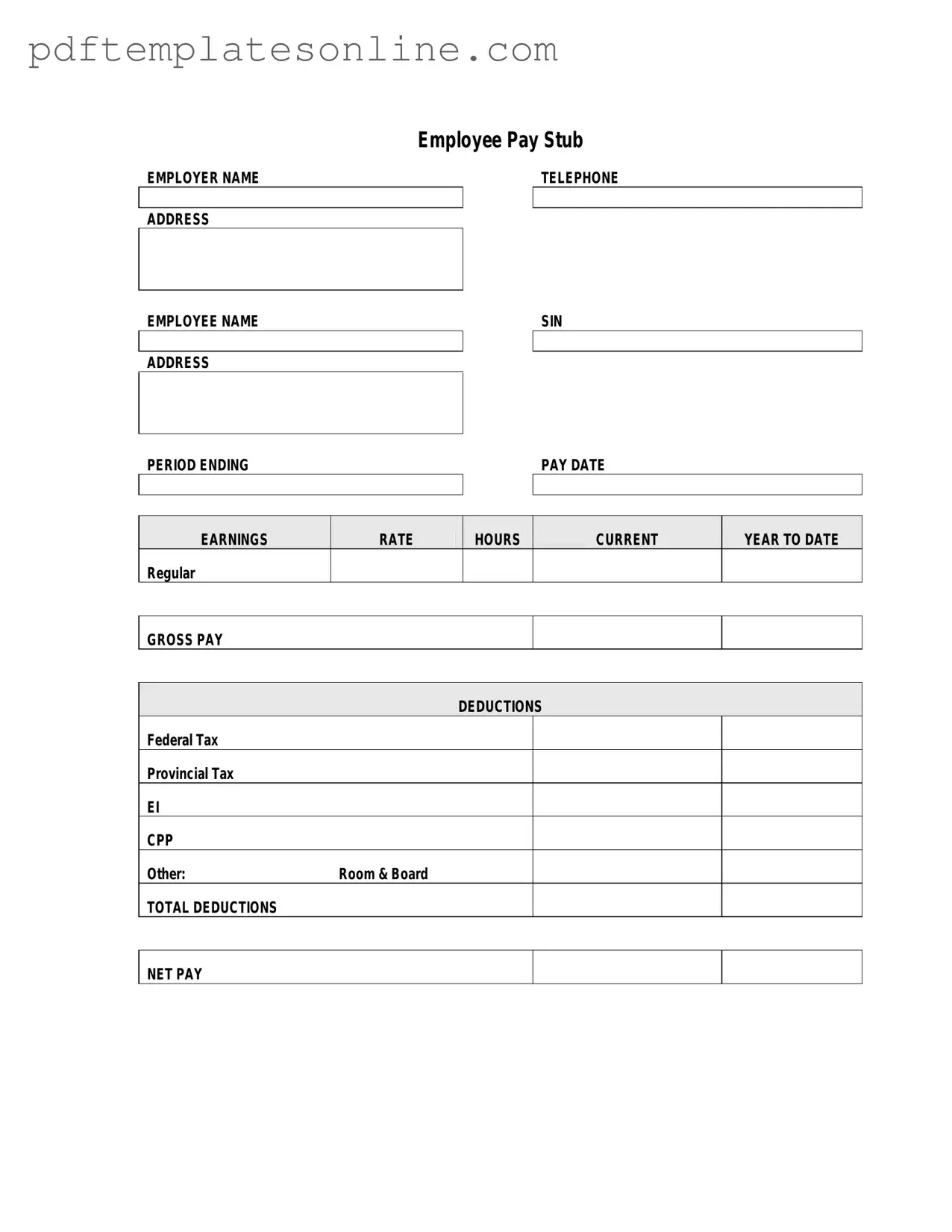Filling out a Pay Stub form accurately is crucial for both employees and employers. Mistakes can lead to confusion, discrepancies in pay, and even legal issues. Here are eight common errors that people make when completing this important document.
One frequent mistake is not double-checking personal information. It’s essential to ensure that your name, address, and Social Security number are correct. Even a small typo can create significant problems down the line, such as issues with tax filings or benefits eligibility.
Another common error involves miscalculating hours worked. Employees should accurately record their hours to avoid underpayment or overpayment. It's advisable to keep a personal log of hours worked to cross-reference with the Pay Stub form.
Many individuals also overlook not understanding deductions. Pay stubs often include various deductions for taxes, health insurance, and retirement contributions. Not fully grasping these can lead to confusion about take-home pay. Take the time to review each deduction and understand its purpose.
Some people fail to update their tax withholding information when their personal circumstances change, such as getting married or having a child. This can result in either owing taxes at the end of the year or having too much withheld from each paycheck. Regularly reviewing and updating this information is vital.
Another mistake is not keeping copies of past pay stubs. These documents serve as important records for tax purposes and can help resolve discrepancies. Always save copies of your pay stubs for at least a year.
Additionally, people often forget to review their pay stub for errors. It’s important to regularly check for mistakes in pay calculations, deductions, and hours worked. If something seems off, address it immediately with your employer or payroll department.
Some individuals make the error of ignoring state-specific regulations. Different states have different rules regarding pay stubs, including what information must be included. Familiarizing yourself with your state's requirements can prevent potential issues.
Lastly, many fail to communicate with HR or payroll when they notice discrepancies. If an error is found, it’s crucial to report it as soon as possible. Delaying communication can complicate the resolution process and may result in additional stress.
By being aware of these common mistakes and taking proactive steps to avoid them, you can ensure that your Pay Stub form is filled out correctly and that your financial interests are protected.
